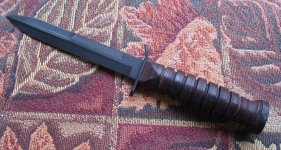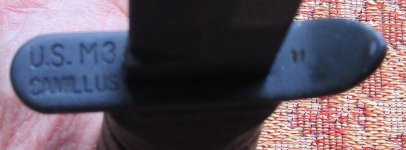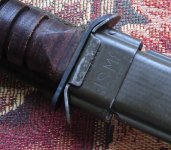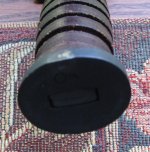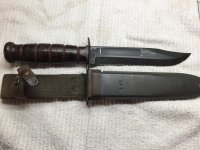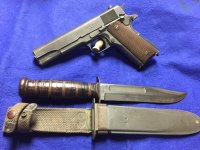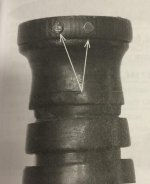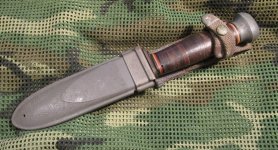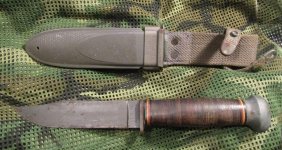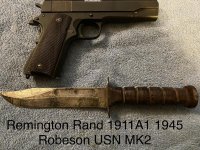Reports are that the M3 and, it's replacement, the M4 were very popular with the troops. In fact, the post war M5 bayonet for the M1 Garand used the same blade design as the M3 and M4.
The blade design was used on the M6 bayonet for the M14 as well as the M7 bayonet for the M16, still using the M8A1 sheath.
The M3 was designed as a combat knife in place of the Fairbairn-Sykes knife that American Rangers and other special operations troops had been using.
It was quickly replaced by the M4 bayonet for the M1 carbine when someone figured out the same basic knife could perform both roles with minimal changes.
The M3/M4s main weakness as a fighting knife was the only partially reverse edge which limited its utility in backhand slashing attacks, but it was necessary to strengthen the spine of the blade as they used a narrow blade profile to conserve strategic material. Another weakness was the relatively short tang, compared to the USMC Ka-Bar, which leaves the forefinger and thumb closer to the guard and more prone to getting cut when parrying a kite attack.
The other complaint some folks made was that they wouldn’t hold an edge, but that’s a relative thing. They were made from 1095 Crovan steel which has a hardened in the 56-60 range. As such it’s both easy to sharpen and still holds an edge fairly well. The USMC Ka-Bar was made from the same steel and the Marines didn’t complain about its edge holding ability.
1095 Crovan steel is not very rust resistant, thus the M3 and subsequent bayonets were parkerized. The Ka-Bar was made of the same steel and was painted to protect it from rust.
—-
Post war the M3/M4 design was adapted to create the M5 as a new bayonet for the M1 Garand, replacing the M1 and cut down 1905 bayonets.
The major changes were, the plastic scales to accommodate the button and internal lever arrangement to engage the bayonet stud on the M1 Garand, and the stud on the guard to engage the hole in the gas cylinder.
The M6 bayonet used on the M14 shared the same design, but with a ring on the guard to engage the flash suppressor.
Interestingly, the M7 bayonet for the M16 reverted to the M1 Carbine/M4 bayonet style locking mechanism. It retained the plastic scales, but also reverted to a rounded profile for the grip.
The tang and grip however were about a half inch longer than the M3 through M6. The length of the grip on the M7 is nearly identical to the length of the grip on the USMC Ka-Bar, finally overcoming the short grip concern on the M3 after 20 years and three intervening bayonet designs.


